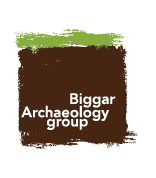10 – Cairn
This is an isolated example of a small cairn. Such piles of stones were gathered to clear the ground for agriculture, but many individual cairns have been shown to be burial monuments, often covering cremated remains dating to the...
09 – Bronze Age Unenclosed Platforms
The remaining points of interest on the walk date from a much earlier period than the fermtoun, indicating continuity of settlement from the Bronze Age (circa 2000 BC) onwards. On the left is a Bronze Age house platform. Fuller...
08 – Sheep Buchts
Buchts were used in the 17th and 18th centuries to milk sheep and to carry out other activities such as shearing and smearing the sheep fleeces.
The buchts were simple rectangular enclosures built with turf, roofless and open ended at...
07 – The Bastle House
The difference between the Bastle House and the other buildings on the fermtoun will be readily appreciated. The name is derived from the French 'bastille' and simply means a strong or defensive place.
Bastle Houses were built exclusively with defence...
06 – Buildings 5, 6 and 7
This range of buildings developed from a building now underlying No 5, a very long byre, which may have had a house at the far end.
Byre No 6, a well preserved structure which was never occupied by people, was...
05 – House Byres 8 and 9.
Building No 8
This house byre has an interesting floor surface showing the drain which has been filled in with the perforated stones cut to accommodate the posts separating individually stalled animals. Finds show that this byre became a house....
04 – House Byres 10 and 11
Most of the buildings are house byres similar to Building 13, but each has its own characteristics, and several have undergone changes of use indicated both by floor plans and the range of objects found. The position of the...
03 – House Byre No. 13
The archaeologists believe this is the earliest building in the fermtoun, perhaps the earlier house of the farmer who built the bastle house around AD 1600, and it may have been the principal house. This combined house and byre,...
02 – Viewpoint from Doddin Hill
Looking down on the site from Doddin hill
A Scottish upland fermtoun was a cluster of crude buildings surrounding a more substantial stone farmhouse belonging to a tenant farmer, sometimes known as a ‘bunnet laird’.
Often people and animals lived under...
01 – Welcome to Glenochar Bastle House and Fermtoun Trail
Bastle houses were defensive farmhouses of the late 16th and early 17th centuries and were built exclusively in the border areas between Scotland and England. Tenant farmers who were wealthy as a result of their flocks of sheep and herds...















